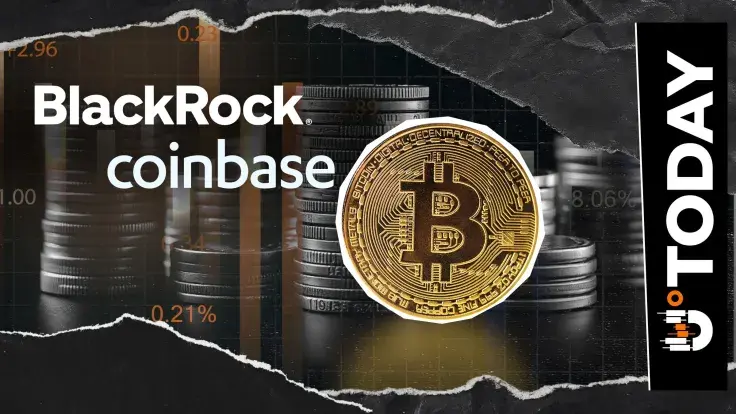Bitcoin's Million-Dollar Dream: Experts Weigh In On Future Valuation!
Bitcoin's price trajectory has been nothing short of extraordinary over just over a decade, witnessing a monumental rise from a mere few hundred dollars to surpassing $100,000. This dramatic appreciation has facilitated one of the most significant wealth transfers in modern history. A pivotal question now preoccupies investors: can Bitcoin sustain this exponential growth and potentially reach a seven-figure valuation, and if so, when might this occur?
Among the various analytical frameworks, the Stock-to-Flow model has generated considerable debate. Although it once served as a potential roadmap for Bitcoin's price, its predictive power diminished after failing to accurately forecast post-halving performance in recent cycles. Nevertheless, the fundamental premise of the model —that Bitcoin's inherently programmed scarcity is a primary driver of its long-term value —remains a valid consideration in understanding its market dynamics.
A more pragmatic approach to assessing Bitcoin's fundamental value involves examining its production cost, which represents the estimated electrical expense incurred to mine one Bitcoin. Historically, this metric has served as a robust structural floor for its price. Each halving event effectively doubles this production cost, thereby tightening the available supply and establishing a new, elevated base for future price appreciation.
Based on current trends in mining efficiency and average energy prices, the production cost is anticipated to escalate to approximately $175,000 per BTC by early 2028, following the next halving. This level has consistently aligned with past cycle lows, suggesting that if Bitcoin's price maintains its position above this cost basis, its fair valuation could realistically approach $200,000 by that timeframe. Extending this projection further, the estimated cost to mine one Bitcoin could reach around $675,000 by 2032, assuming moderate enhancements in miner efficiency and no drastic shifts in global energy expenditures.
Historically, Bitcoin's price has peaked at multiples of its production cost. This multiple was approximately 9x in 2017, 4.5x in 2021, and roughly 2.25x in the current cycle, demonstrating a diminishing pattern. Should this trend persist, even a conservative 1.5x multiple during the 2032 cycle could propel BTC towards the $1 million mark. This suggests that the next significant peak, potentially achieving a seven-figure price, could materialize sometime in the mid-2030s.
Analyzing Bitcoin's compounded annual growth rate (CAGR) since its initial exchange listings reveals a consistent but gradually decelerating growth curve. When subjected to linear regression modeling, this trend indicates a potential BTC price of roughly $2 million by 2035, followed by a period of diminishing returns. By 2040, such models suggest Bitcoin could range between $5 million and $10 million, depending on the specific starting data window employed in the analysis. However, it is crucial to recognize that these regression-based models, including "Power Law" or logarithmic growth curves, share a common limitation: they are primarily backward-fitted. Their accuracy is generally confined to hindsight, rather than offering precise foresight. Minor variations in data points or timeframes can significantly alter long-term projections by years or millions of dollars, rendering them valuable for contextual understanding but unreliable for exact predictions.
In conclusion, while various models can offer valuable frameworks for understanding potential trajectories, Bitcoin's price ultimately hinges on the dynamic interplay of supply and demand. As the rate of new issuance continues to decline and global adoption expands, the production cost floor and the broader liquidity environment are expected to remain the most influential long-term anchors. Macroeconomic forces, particularly real yields, the extent of monetary expansion, and the rotation of capital from traditional assets, will continue to play a critical role in determining the pace and magnitude of Bitcoin's appreciation. If Bitcoin adheres to its historical rhythm, the mid-2030s could indeed usher in an era where a seven-figure price becomes a reality. Nevertheless, as every cycle has demonstrated, models serve to guide expectations rather than dictate them. The most prudent strategy remains consistent: adapt to the evolving data, rather than attempting to predict definitive outcomes.
You may also like...
Football Legend Reflects on 50 Years of Game-Changing Moments

A football veteran with over 50 years in the sport proposes changes to improve the game, emphasizing the importance of f...
Super Eagles' World Cup Dream on the Line: High Stakes vs. Gabon

Nigeria's Super Eagles face Gabon in a high-stakes 2026 FIFA World Cup playoff semifinal amid camp tensions over unpaid ...
Woody and Buzz Return in First Terrifying 'Toy Story 5' Trailer!

Pixar's "Toy Story 5" reveals a new high-tech foe, Lilypad, a frog-shaped tablet poised to make old toys obsolete. The f...
Sabrina Carpenter Jumps Down the Rabbit Hole in New 'Alice in Wonderland' Project

Pop sensation Sabrina Carpenter is set to star in and produce her first major theatrical leading role, an "Alice in Wond...
Grammy Nods Under Scrutiny: What Do 2024's Picks Reveal About the Recording Academy's Direction?

The 68th Annual Grammy Awards nominations for the 2026 cycle have been announced, with Kendrick Lamar leading the pack w...
Alison Hammond Reveals Shocking Weight Loss Secret!

TV presenter Alison Hammond has broken her silence on her 13 stone weight loss, passionately condemning the judgment sur...
Tragedy Strikes: Jasmine Harman's Husband Battles Heart Attack During Renovation!

Jasmine Harman, "A Place In The Sun" presenter, shares the shocking news of her husband Jon's heart attack at 45 during ...
Wizkid's Son, Boluwatife Balogun, Drops Highly-Anticipated Debut EP 'Champion's Arrival'!

Wizkid's 14-year-old son, Boluwatife Balogun, known as Champz, has released his debut five-song EP, "Champion's Arrival....




